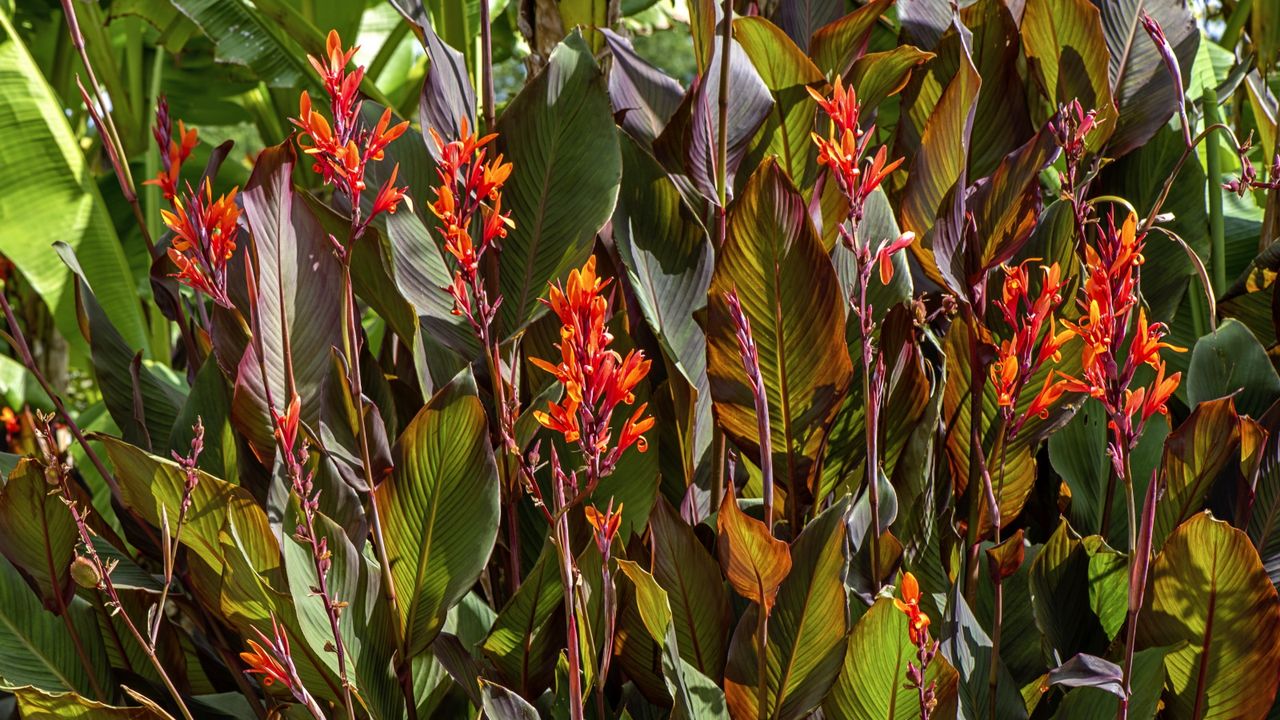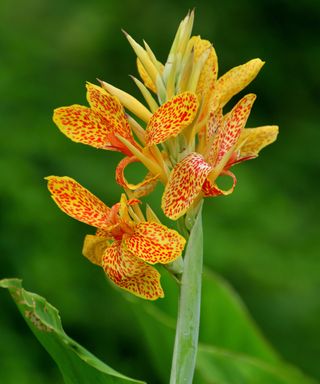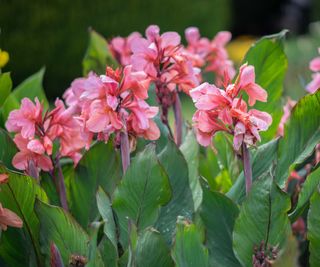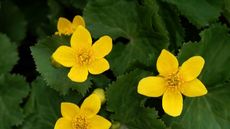How to overwinter canna bulbs – expert advice on how to store these vivacious blooms
With our advice on how to store canna bulbs, you can enjoy these exotic-looking perennials year after year

Cannas, otherwise known as canna lilies, are a bold addition to any outdoor space with their showy, hot-hued, summertime blooms. Native to the American tropics, their exotic appearance makes them ideal for tropical-style garden planting schemes, and they also do well in borders and containers.
But cannas are tender, and won't survive frosty conditions without your help, particularly if your soil is heavy. Knowing how to overwinter and properly store canna bulbs will be essential if you're expecting a drop in temperatures.
So, as part of your fall gardening checklist, it's wise to provide some protection to ensure you can enjoy these plants again next year. Here's how:

How to overwinter and store canna bulbs in 5 simple steps
Learning how to store canna bulbs is straightforward, and worth the effort if you want the best chance of enjoying new blooms in your flower beds each year.
- Wait until fall, when the plant has finished flowering and the foliage has withered. Then, cut it back using a pair of pruning shears to about 6in (15cm).
- Carefully lift the canna rhizomes using a garden spade. Avoid using a garden fork which can damage them.
- Brush away excess soil from the bulbs. Then, place them in trays filled with barely-damp wood vermiculite or multi-purpose compost. Position the trays somewhere cool, dry, and frost-free: a garden shed, greenhouse, or garage, for instance.
- 'Try not to let the rhizomes dry out,' says gardening expert John Negus. However, don't allow them to become too damp, either. Check on them periodically and water sparingly if needed. At the same time, keep an eye out for any which are showing signs of rot, and discard them.
- In spring, you can pot up the rhizomes in compost, water lightly, and keep them somewhere warm (50-60˚F). Harden them off before planting outdoors, once the risk of frosts has passed.

John has been a garden journalist for over 50 years, has written four books, and has also delivered many talks on horticulture. As well as this, he regularly answers readers' questions in Amateur Gardening magazine, including many on canna lily care.

Can you divide canna bulbs?
Many perennials can be divided – it's easy and a great way to get free plants for your garden.
With cannas, 'it is recommended that division takes place either on lifting the rhizomes in fall, or on starting them into growth in spring for plants that were lifted,' says John.
If you're planning on mulching your canna bulbs rather than storing them, lift and split them once flowering has finished and growth has ceased, but before the foliage has died away. They should be fine to be replanted – just remember to mulch them before temperatures drop.
If you're just starting off your canna lily collection, you can find mixed bags of canna bulbs like this one available from Walmart.
FAQs
Should I overwinter canna bulbs in pots?
Cannas make excellent container plants, and if you have grown yours this way, you don't have to lift them for winter. Instead, simply move the pots somewhere that is frost-free.
Can I store canna bulbs indoors?
Yes, it's a good idea to keep your canna bulbs somewhere cool and dry, so an indoors location such as a garage or laundry room would work well. Remember when overwintering plants indoors to check them every now and again to make sure none of the bulbs are rotting.
Canna lilies will also benefit from a decent prune after their flowering season has ended. Understanding when and how to prune canna lilies correctly may depend on your local climate.
Sign up to the Homes & Gardens newsletter
Design expertise in your inbox – from inspiring decorating ideas and beautiful celebrity homes to practical gardening advice and shopping round-ups.
Holly started writing about gardening nearly four years ago for Gardeningetc.com. She is now a regular contributor to Homes & Gardens and has written many gardening features for Woman & Home and Real Homes online, too. She has previous experience as a professional gardener in the UK, where she helped to plant and maintain private gardens. Holly has also looked after allotment plots over the years and loves to grow her own flowers and veggies from seed. In her spare time, she enjoys visiting local gardens, botanical drawing, and tending to her ever-growing collection of houseplants.
-
 I ditched smokey incense sticks and candles for non-toxic dry-fragrance reeds – now my house always smells like a luxurious hotel for just $18
I ditched smokey incense sticks and candles for non-toxic dry-fragrance reeds – now my house always smells like a luxurious hotel for just $18They smell so good and last for longer than oil reed diffusers
By Punteha van Terheyden Published
-
 How to grow marsh marigolds – the ultimate low-maintenance, moisture-loving plant that spring pollinators adore
How to grow marsh marigolds – the ultimate low-maintenance, moisture-loving plant that spring pollinators adoreMarsh marigolds can thrive in problem areas, including moist woodlands and boggy soils
By Thomas Rutter Published